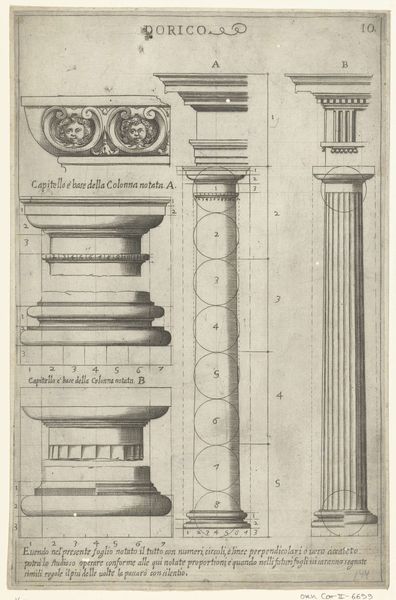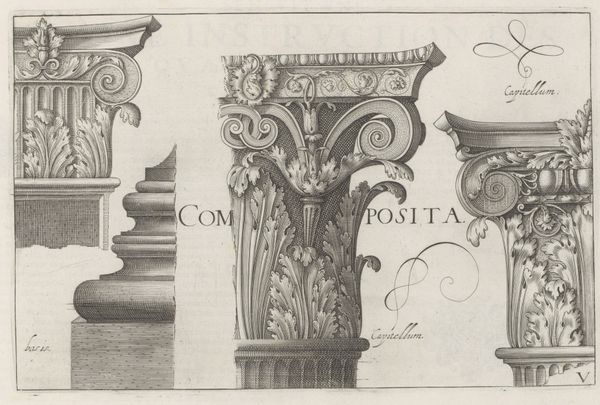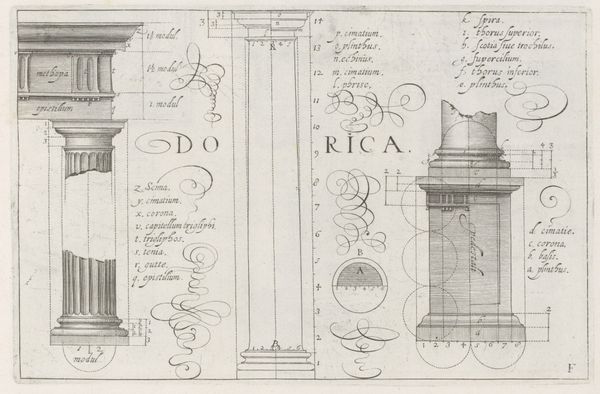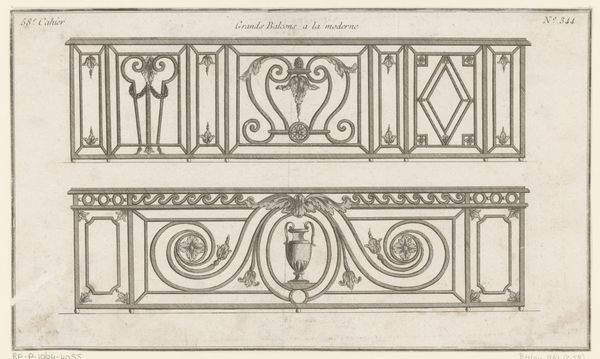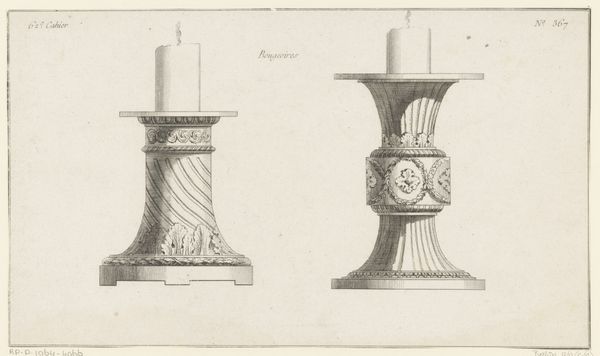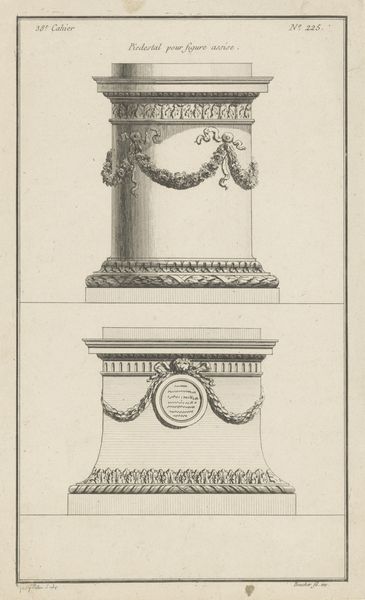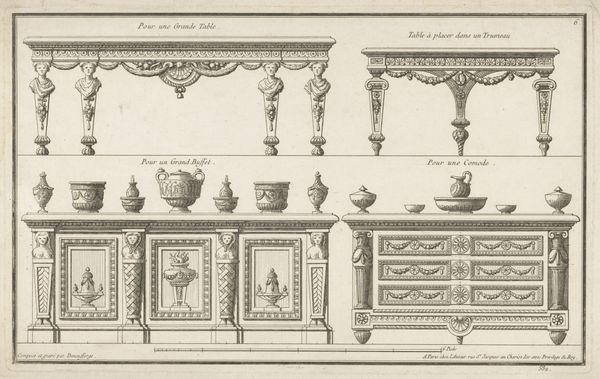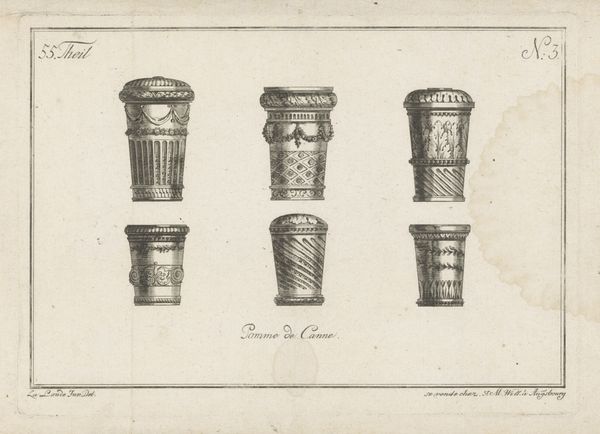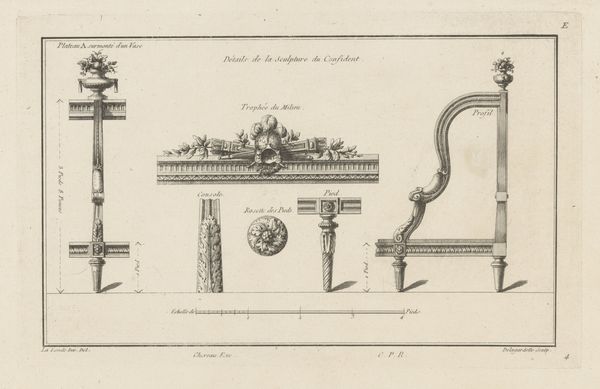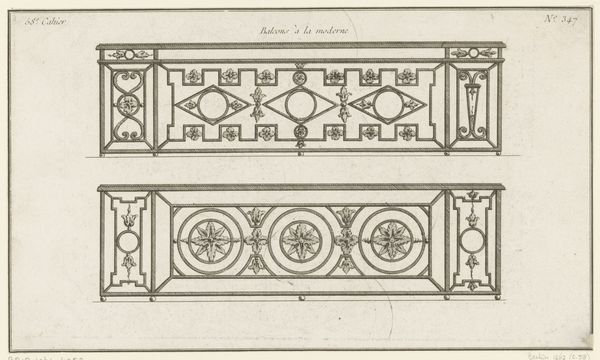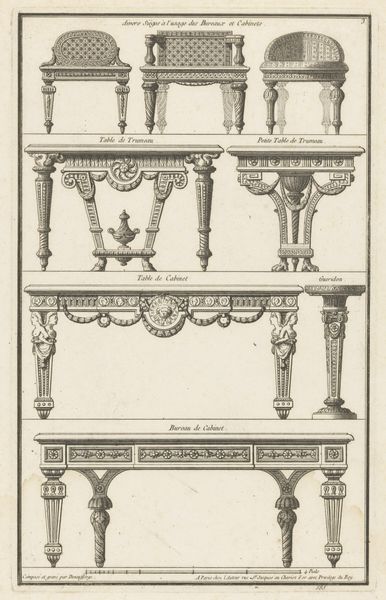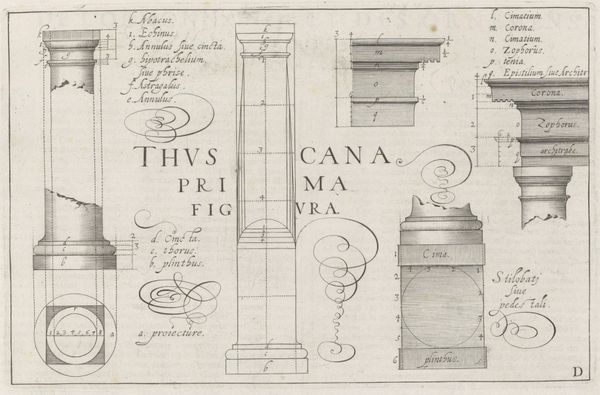
drawing, print, engraving, architecture
#
drawing
#
baroque
# print
#
engraving
#
architecture
Dimensions: height 189 mm, width 285 mm
Copyright: Rijks Museum: Open Domain
Curator: Let’s turn our attention to Hendrick Hondius I’s “Composiete details,” a drawing and engraving dating from the period 1606 to 1620, found here at the Rijksmuseum. My initial reaction is one of awe at the intricacy, particularly of the curling flourishes that adorn the piece. Editor: Indeed, there is a real precision here; I am particularly drawn to considering what Hondius would have been thinking about as he constructed these components—literally, composing the parts to the sum of the construction. This goes back to the ways prints, drawings and architecture influence each other. Hondius' work sits at that very intersection. Curator: The composition exemplifies the Baroque preoccupation with detail and the dramatic interplay of forms. See how each fragment, whether "Corona," "Capitellum," or "Basis," meticulously captures architectural elements through line and shade, while it showcases the very specific proportional logic inherent within this vocabulary. The lettering and annotations only enforce this didacticism. Editor: Absolutely, it is essentially a construction manual page. I keep considering his access to various stone materials, and the sheer physical labor that all of this implied— not just his own crafting with the drawing itself, but the very material conditions under which these idealised forms became a reality. How accessible was, say, marble to builders working within this broader Dutch context? Curator: A compelling question, no doubt. But perhaps it underscores the drawing's status as a speculative exercise. Hondius delineates architectural principles; accessibility to actual materials may have been secondary to the articulation of ideal forms. These proportions transcend any earthly stone. Editor: I see your point—though I struggle to fully detach form from its intended execution, the materials he envisions give context to these drawings. If these forms cannot be properly realized, what exactly are we to think of their aesthetic impact beyond the page? Curator: Well, to my mind, the legacy and study is not material, but ideal! Think about what these diagrams tell us about enduring structural and stylistic values, values far exceeding mere practicality or implementation of current availability of materials and craftmanship! Editor: Ultimately, these questions really reflect how his meticulous style offers so many angles into this visual, spatial language from Hondius and his peers— I do appreciate that aspect. Curator: Yes, it is this multifaceted engagement that lends enduring value to Hondius’s endeavor.
Comments
No comments
Be the first to comment and join the conversation on the ultimate creative platform.

